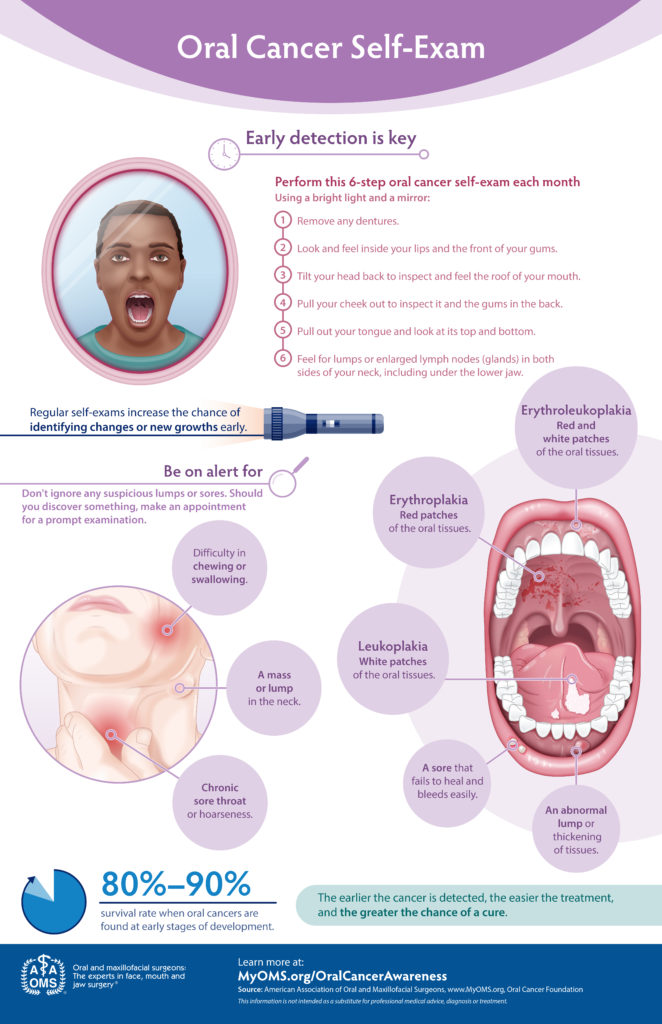Head & Neck Pathology
Oral Pathology
The inside of the mouth is normally smooth and coral pink in color. It is lined with a special type of skin (mucosa) and any alteration in this appearance could be a warning sign for a pathological process. Oral cancer is the most serious of these changes.
The following can be signs at the beginning of a pathologic process or cancerous growth:
- Reddish patches (erythroplasia) or whitish patches (leukoplakia) in the mouth
- A sore that fails to heal and bleeds easily
- A lump or thickening on the skin lining the inside of the mouth
- Chronic sore throat or hoarseness
- Difficulty in chewing or swallowing
These changes can be detected on the lips, cheeks, and palate and gum tissue around the teeth, tongue, face and/or neck. Pain does not always occur with pathology, and is not often associated with oral cancer. However, any patient with facial and/or oral pain without an obvious cause or reason may also be at risk for oral cancer. Do not ignore suspicious lumps or sores, your mouth is one of your body’s most important warning systems.
FACIAL SKIN CANCER AND RECONSTRUCTION
WHAT YOU NEED TO KNOW:
- 1 in 5 Americans will develop skin cancer by the age of 70.
- More than 2 people die of skin cancer in the U.S. every hour.
- Having 5 or more sunburns doubles your risk for melanoma.
- When detected early, the 5-year survival rate for melanoma is 99 percent.
Skin Cancer Foundation’s 2019 Facts via www.skincancer.org
- In the U.S., more than 9,500 people in the U.S. are diagnosed with skin cancer every day. More than two people die of the disease every hour.
- More than 5.4 million cases of nonmelanoma skin cancer were treated in over 3.3 million people in the U.S. in 2012, the most recent year new statistics were available.
- More people are diagnosed with skin cancer each year in the U.S. than all other cancers combined.
- At least one in five Americans will develop skin cancer by the age of 70.
- Actinic keratosisis the most common precancer; it affects more than 58 million Americans.
- The annual cost of treating skin cancers in the U.S. is estimated at $8.1 billion: about $4.8 billion for nonmelanoma skin cancers and $3.3 billion for melanoma.
Dr. Casey recommends regular visits to your dermatologist if you have a family history of skin cancer. Dr. Casey can evaluate facial skin cancer lesions and is well trained in Mohs surgery and immediate reconstruction.
Please call us if you have any questions at: 239-947-6637
